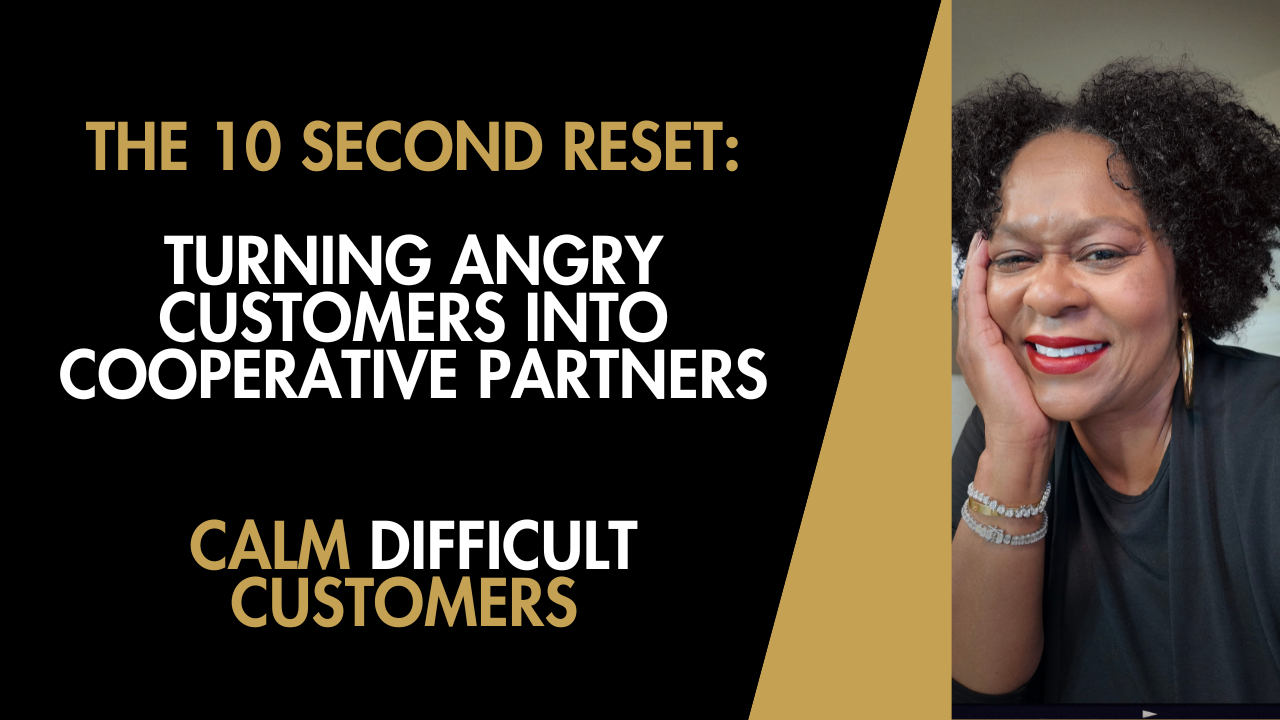How to Reduce Escalations and Long Handle Times in Customer Service

Every day, your customer service team faces emotional customers, long handle times, and stressful escalations. One frustrated caller can disrupt not only the customer experience, but also the emotional state of your employees for the rest of the day.
As leaders, we want our teams to stay calm, take control of conversations, and resolve issues with confidence. But most employees haven’t been taught the psychology behind effectively de-escalating tense interactions—and that’s where the real opportunity lies.
Before we go deeper, I want you to watch a short video that walks you through why de-escalation is so challenging and how your team can start turning tense moments into calmer, more controlled conversations. It gives you a clear picture of what’s possible when employees learn to regulate emotion, redirect negativity, and resolve difficult interactions with confidence.
Now, let’s talk about three practical techniques—one from each step of my 3R Method—that your employees can start using right away.
These will help your team reduce escalations, shorten handle times, and feel more confident in every interaction.
1. Regulate: Use the “Emotional Labeling” Technique
When customers are upset, their emotional brain takes over. Logic can’t land until emotion is acknowledged.
A fast way to regulate the moment is to name the emotion you’re hearing.
Examples:
-
“It sounds like this has been incredibly frustrating.”
-
“I can hear how important this is to you.”
-
“It makes sense that you’re upset.”
This technique decreases the emotional surge, helps customers feel seen, and brings the call back into manageable territory.
2. Redirect: Use the “Future Focus” Technique
Customers often stay stuck in the problem—replaying what went wrong, who dropped the ball, and how disappointed they are.
Future Focus language gently shifts attention toward progress:
-
“Here’s what we can do next…”
-
“Let’s take the next step together…”
-
“Let’s focus on what we can accomplish right now.”
This keeps the conversation moving forward, reduces rumination, and shortens handle times without dismissing the customer’s experience.
3. Resolve: Use the “Two Doors” Close
When employees must say “no,” the fear of escalation is real.
The Two Doors close helps them stay firm while still offering a path forward.
Example:
-
Door 1 (Closed): “We aren’t able to issue a refund on this order…”
-
Door 2 (Open): “…but here’s what I can do to help you today.”
This technique provides clarity, dignity, and direction—without confrontation.
These Techniques Create Calmer, More Confident Teams
When your team learns to:
-
regulate emotion
-
redirect the conversation
-
and resolve confidently
You’ll see immediate improvements in:
-
escalation rates
-
handle time
-
employee confidence
-
customer satisfaction
-
and overall team morale
These three techniques are only a small sample of what your employees learn inside De-escalation Academy.
Bring Calm, Confidence, and Control Back to Your Customer Service Team
If you want to help your employees handle tough conversations with professionalism and ease, De-escalation Academy gives them the psychological tools to do it—without pulling them off the phones for a full day of training.
You can get started today:
👉 Learn more about De-escalation Academy and enroll your team
De-escalation Academy
The step-by-step, psychology-backed system that helps your team handle any tough customer interaction with calm, control, and confidence—on the phone, in person, or in chat.
Join Myra’s Inner Circle: Insights, Strategies, and Resources for Leaders Who Demand the Best.
Be the first to receive exclusive strategies, curated resources, and behind-the-scenes insights from Myra Golden—crafted for leaders who value excellence.
Your information will remain private and protected—always.

